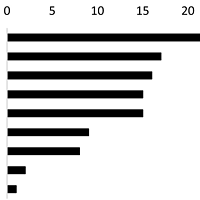Screening of repeated dose toxicity data in safety evaluation reports of cosmetic ingredients issued by the Scientific Committee on Consumer Safety between 2009 and 2019

A focal point in the safety evaluation of cosmetic ingredients includes oral repeated dose toxicity testing, which is intended to address the most complex human endpoints. Seven years after the full implementation of the animal testing ban for cosmetic ingredients in the EU, there are still no alternative methods available capable of fully replacing oral repeated dose toxicity testing. Until this issue is resolved, the development of new cosmetic ingredients remains seriously hampered. The present paper describes a thorough screening of the oral repeated dose toxicity data included in safety evaluation reports of cosmetic ingredients addressed in the Annexes of the Cosmetics Regulation (EC) No 1223/2009, issued by the Scientific Committee on Consumer Safety between 2009 and 2019. The liver and the haematological system were identified as the potentially most frequently affected organs upon oral administration of cosmetic ingredients to animals. Evaluation of altered biochemical, morphological, and histopathological parameters related to hepatotoxicity indicated that the most recurrent events are liver weight changes, elevated liver enzymes, and alterations in serum cholesterol and bilirubin levels. Combined listing of affected parameters associated with steatosis and cholestasis indicated the possible occurrence of cholestasis, provoked by a limited number of cosmetic ingredients. The most frequently affected parameters related to the haematological system were indicative of anaemia. An in-depth analysis allowed characterisation of both regenerative and non-regenerative anaemia, pointing to direct and indirect haematotoxicity, respectively. The results presented in this study call for prioritisation of research targeted towards the development of new approach methodologies fit for animal-free repeated dose toxicity evaluation of cosmetic ingredients.
Publication Reference
Gustafson, E., Debruyne, C., De Troyer, O., Rogiers, V., Vinken, M., & Vanhaecke, T. (2020). Screening of repeated dose toxicity data in safety evaluation reports of cosmetic ingredients issued by the Scientific Committee on Consumer Safety between 2009 and 2019. Archives of Toxicology, 94(11), 3723-3735.


